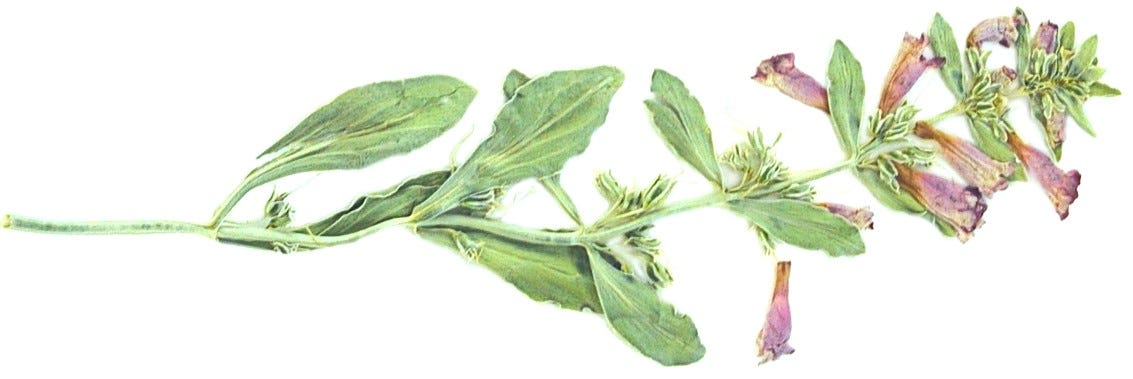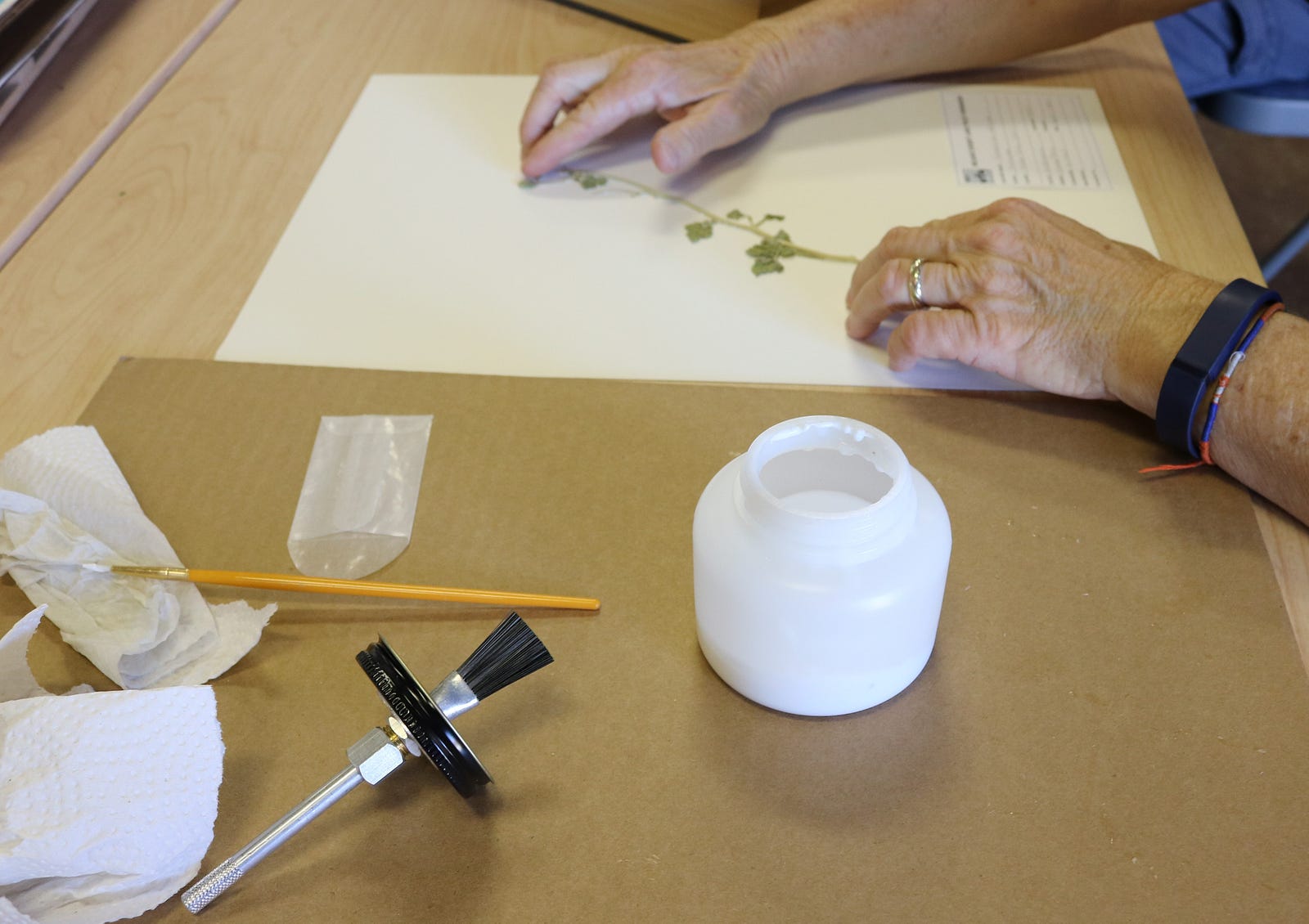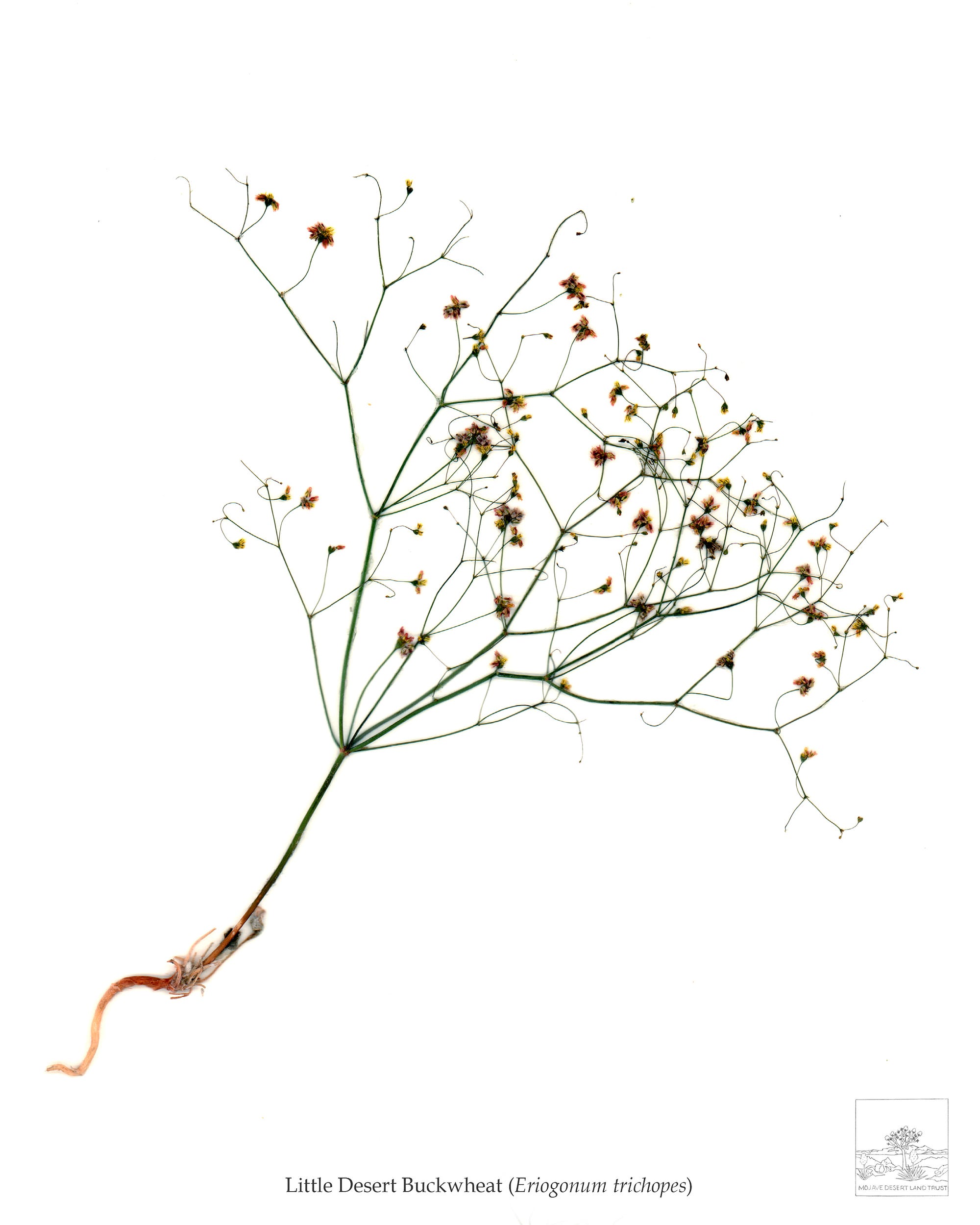Rare desert flower launches new herbarium at Mojave Desert Land Trust

While out on a land monitoring expedition in February 2017, a group of Mojave Desert Land Trust staff came across a very special plant.
“We were going out onto our lands to monitor and collect seed, and in the process we were coming across some rare species,” says Madena Asbell, Director of Plant Conservation Programs at the land trust. “Last year we came across something that was very rare, so much so that other people were interested in having us document it.”
That plant was Penstemon albomarginatus, commonly known as white-margined penstemon. While numerous varieties of penstemon flourish in the desert, this particular variety is so rarely seen that other conservation organizations and botanists were eager to document the sighting. MDLT staff collected a specimen and pressed it in order to keep it preserved. The delicate P. albomarginatus became the first in what is now a growing collection of pressed specimens.

After the discovery, Madena was inspired to start an herbarium at the land trust as an extension of the organization’s efforts towards plant conservation. Herbaria are collections of preserved plant specimens that act as invaluable resources for identifying plants by creating historical records of their occurrences. A grant from Patagonia made the project possible, and by 2018 the land trust was ready to start collecting specimens.

During this year’s seed collecting season, staff and volunteers collected over 100 specimens to add to the herbarium. Collectors take care to choose specimens that represent as much of the plant as possible — including the stem, leaves, flowers, seeds, and fruits. The specimens are carefully pressed to best show the plant’s qualities. After pressing, they are mounted on archival paper and stored in a special cabinet to keep them well-preserved.

In addition to the physical specimen, collectors gather data about the location and environment in which the plant was found. In time, the land trust plans to scan the collection and make the images and information available online so that people all over the world can use the herbarium as a resource.
Closer to home, Madena sees the herbarium as a tool to get people excited about plant conservation. She plans to use the herbarium specimens in workshops about plant identification and specimen collecting. Emmalyn Snead, land steward at the land trust, encourages those interested to try pressing plants. “It’s a hobby anyone can get into… it’s a historical repository for plant diversity, but it can also be taken artistically. There’s a lot of avenues you can take with pressing plants.”
For the Mojave Desert Land Trust, the new herbarium creates another valuable tool for increasing awareness about the importance of plant and land conservation. “Plants often don’t get the credit they deserve,” says Madena. “The entire planet depends on plants. They’re just too important to overlook and treat as if they’re just the backdrop for everything else.”

— By Claude Fenton
Those interested in joining our spring collecting expeditions can sign up to volunteer here, or email Volunteer and Outreach Coordinator Cindy Holland at cindy@mdlt.org. Prospective volunteers can expect a special seed and specimen collecting training early next year.
If you’re interested in heading out to collect your own pressings, be aware that collecting of any sort is prohibited in National Parks and land managed by the Bureau of Land Management and the Mojave Desert Land Trust. Would-be collectors can venture out onto privately owned land or onto National Forest land with a permit.
